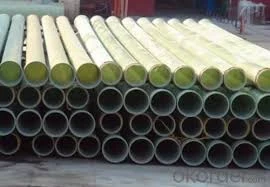
-
 Afrikaans
Afrikaans -
 Albanian
Albanian -
 Amharic
Amharic -
 Arabic
Arabic -
 Armenian
Armenian -
 Azerbaijani
Azerbaijani -
 Basque
Basque -
 Belarusian
Belarusian -
 Bengali
Bengali -
 Bosnian
Bosnian -
 Bulgarian
Bulgarian -
 Catalan
Catalan -
 Cebuano
Cebuano -
 China
China -
 China (Taiwan)
China (Taiwan) -
 Corsican
Corsican -
 Croatian
Croatian -
 Czech
Czech -
 Danish
Danish -
 Dutch
Dutch -
 English
English -
 Esperanto
Esperanto -
 Estonian
Estonian -
 Finnish
Finnish -
 French
French -
 Frisian
Frisian -
 Galician
Galician -
 Georgian
Georgian -
 German
German -
 Greek
Greek -
 Gujarati
Gujarati -
 Haitian Creole
Haitian Creole -
 hausa
hausa -
 hawaiian
hawaiian -
 Hebrew
Hebrew -
 Hindi
Hindi -
 Miao
Miao -
 Hungarian
Hungarian -
 Icelandic
Icelandic -
 igbo
igbo -
 Indonesian
Indonesian -
 irish
irish -
 Italian
Italian -
 Japanese
Japanese -
 Javanese
Javanese -
 Kannada
Kannada -
 kazakh
kazakh -
 Khmer
Khmer -
 Rwandese
Rwandese -
 Korean
Korean -
 Kurdish
Kurdish -
 Kyrgyz
Kyrgyz -
 Lao
Lao -
 Latin
Latin -
 Latvian
Latvian -
 Lithuanian
Lithuanian -
 Luxembourgish
Luxembourgish -
 Macedonian
Macedonian -
 Malgashi
Malgashi -
 Malay
Malay -
 Malayalam
Malayalam -
 Maltese
Maltese -
 Maori
Maori -
 Marathi
Marathi -
 Mongolian
Mongolian -
 Myanmar
Myanmar -
 Nepali
Nepali -
 Norwegian
Norwegian -
 Norwegian
Norwegian -
 Occitan
Occitan -
 Pashto
Pashto -
 Persian
Persian -
 Polish
Polish -
 Portuguese
Portuguese -
 Punjabi
Punjabi -
 Romanian
Romanian -
 Russian
Russian -
 Samoan
Samoan -
 Scottish Gaelic
Scottish Gaelic -
 Serbian
Serbian -
 Sesotho
Sesotho -
 Shona
Shona -
 Sindhi
Sindhi -
 Sinhala
Sinhala -
 Slovak
Slovak -
 Slovenian
Slovenian -
 Somali
Somali -
 Spanish
Spanish -
 Sundanese
Sundanese -
 Swahili
Swahili -
 Swedish
Swedish -
 Tagalog
Tagalog -
 Tajik
Tajik -
 Tamil
Tamil -
 Tatar
Tatar -
 Telugu
Telugu -
 Thai
Thai -
 Turkish
Turkish -
 Turkmen
Turkmen -
 Ukrainian
Ukrainian -
 Urdu
Urdu -
 Uighur
Uighur -
 Uzbek
Uzbek -
 Vietnamese
Vietnamese -
 Welsh
Welsh -
 Bantu
Bantu -
 Yiddish
Yiddish -
 Yoruba
Yoruba -
 Zulu
Zulu
frp pipes and fittings for ship building
The Use of FRP Pipes and Fittings in Shipbuilding
In the ever-evolving realm of shipbuilding, the choice of materials plays a crucial role in determining the longevity and performance of vessels. One material that has gained significant traction in recent years is Fiberglass Reinforced Plastic (FRP). FRP pipes and fittings have emerged as an essential component in shipbuilding due to their myriad advantages, including corrosion resistance, lightweight nature, and excellent mechanical properties.
Understanding FRP
FRP is a composite material that combines a polymer matrix with reinforcing fibers, typically glass or carbon. This combination results in a material that possesses a low density, high strength-to-weight ratio, and excellent resistance to chemical degradation. In shipbuilding, where the marine environment can be harsh and unforgiving, the advantages of using FRP over traditional materials like steel or aluminum become apparent.
Advantages of FRP in Shipbuilding
1. Corrosion Resistance One of the most significant benefits of FRP is its exceptional resistance to corrosion. In marine environments, vessels are continuously exposed to saltwater, which can lead to rust and degradation of metal components. FRP does not corrode when exposed to saline conditions, significantly increasing the lifespan of pipes and fittings used in ships’ plumbing and systems.
2. Lightweight The lightweight nature of FRP is another critical advantage. Marine engineers continuously seek to reduce the overall weight of vessels to improve fuel efficiency and increase cargo capacity. FRP is much lighter than steel or aluminum, allowing for easier handling during installation and maintenance while also contributing to more efficient vessel design.
3. Durability and Strength Despite its lightweight characteristics, FRP exhibits remarkable strength and durability. It can withstand impact and stress without deforming or failing, making it ideally suited for high-pressure applications often found in shipbuilding. The toughness of FRP also reduces the risk of leaks, an essential consideration for any marine application.
frp pipes and fittings for ship building

4. Thermal Insulation FRP provides excellent thermal insulation properties. This feature ensures that systems transporting hot or cold fluids maintain their desired temperatures longer, contributing to energy savings and operational efficiency.
5. Reduced Maintenance Costs Given its resistance to corrosion and the need for less frequent replacements compared to traditional materials, the adoption of FRP can lead to significant reductions in maintenance costs. This financial aspect is a major selling point for shipbuilders looking to enhance the total lifecycle efficiency of their vessels.
Applications of FRP in Shipbuilding
The versatility of FRP allows it to be employed in various shipbuilding applications. Among these, FRP pipes and fittings are commonly used in plumbing systems, cooling water systems, and fuel lines. Its lightweight and robust characteristics are advantageous in both above-deck and below-deck installations. Additionally, FRP is used in constructing lightweight hulls and components, thereby reducing the vessel's overall weight while maintaining structural integrity.
Challenges and Considerations
Despite its many benefits, the adoption of FRP in shipbuilding does come with challenges. The cost of FRP materials can be higher upfront compared to traditional options, which may deter some shipbuilders. Furthermore, specific fabrication techniques and expertise are necessary to ensure optimal performance and reliability in marine applications. Ensuring proper installation and maintenance practices are critical to realizing the full potential of FRP materials.
Conclusion
As the shipbuilding industry continues to embrace innovation, FRP pipes and fittings stand out as a transformative material option. Their unique properties make them highly suitable for modern vessels designed for efficiency and longevity. With ongoing advancements in material technology and engineering practices, FRP is set to play an increasingly integral role in the future of shipbuilding, heralding a new era where performance meets sustainability on the high seas.









